The Boots dancefloor during a 1990s Pride weekend event. Photo courtesy of Casey McNeill.
Article originally published September 17, 2013 by The Grid online (thegridto.com).
One of the largest and longest-lasting gay dance clubs in Toronto, this Sherbourne Street super-club went through a number of evolutions as it spurred the local mainstreaming of gay culture during the ’80s and ’90s.
BY: DENISE BENSON
Club: Boots/Boots Warehouse, 592 Sherbourne St.
Years in operation: 1981-2000
History: The story of Boots, one of Toronto’s best-known and longest-lasting gay dance clubs, begins in 1980 at the Waldorf Astoria apartment building. The basement of what was once a hotel at 80 Charles St. E. was rented to a group of men; their first incarnation of Boots proved popular enough that there were noise complaints. The lease was not renewed.
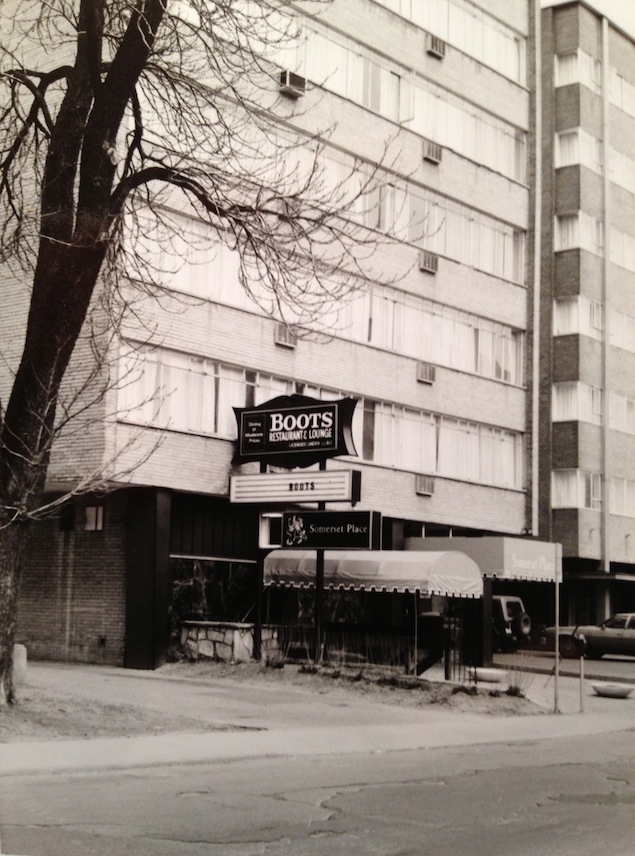
The original Boots on Charles Street. Photo by Joan Anderson,
courtesy of the Canadian Lesbian & Gay Archives.
By late summer of 1981, Boots re-opened in another lower-level location, this time at 592 Sherbourne St., site of the historic Selby Hotel. Once a grand mansion, the building was constructed in the late-1800s, and was home for more than 20 years to members of the wealthy Gooderham family. In 1910, a large addition built on the rear of the mansion opened as Branksome Hall, a private school for girls.
The mansion became a hotel in 1915. Ernest Hemingway and his wife took up temporary residence there during the 1920s while the writer worked as a foreign correspondent for the Toronto Star. The address is also said to have housed a brothel, and a popular licensed establishment in the 1950s named the Skyway Lounge. By the 1970s, it was in decline—however, Boots’ best-known co-owners, Rick Stenhouse and Jerry Levy, were not deterred by the Selby’s rundown state.
“Rick and Jerry were part of a group of businessmen that had individual interests in a number of enterprises,” explains Brent Storey, a Boots regular-turned-staffer who soaked up a great deal of the Selby’s history from stories told to him by two long-serving bartenders and the building’s handyman of four decades.
“Jerry was best known for the Club Toronto [bathhouse], while Rick also owned Crispins and Buddys [later the Bijou] at Gerrard and Church [as well as the Bourbon Street jazz club and dinner theatre at 180 Queen St. W.]. Boots was really Rick’s place.”
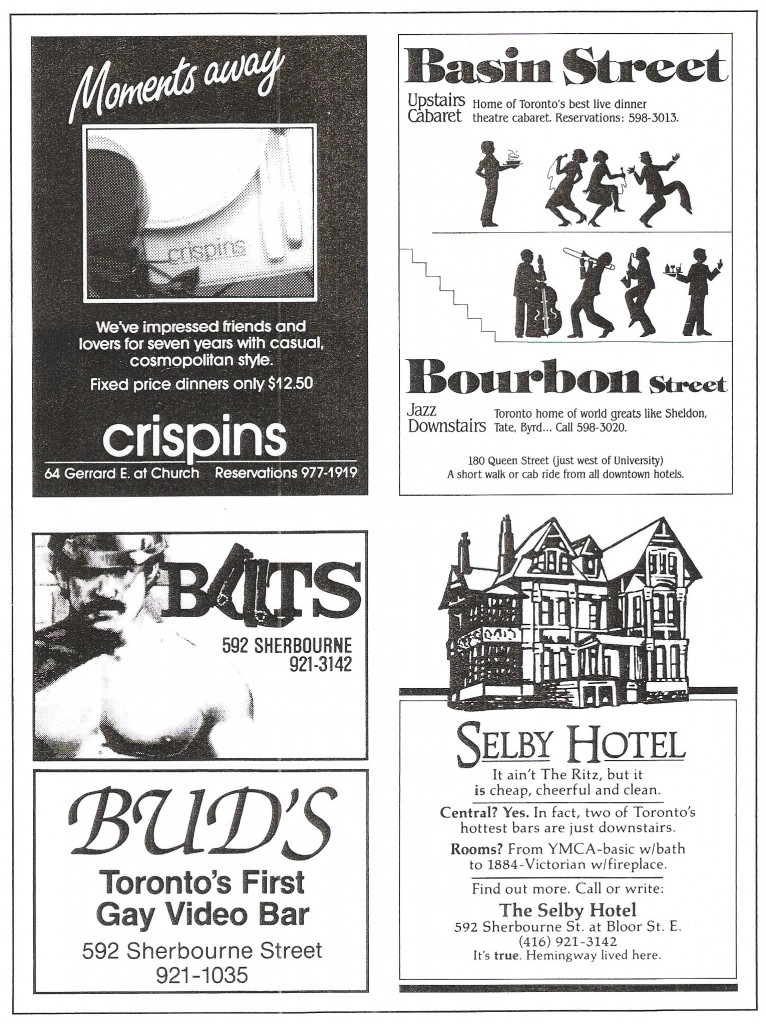
Ads for establishments owned by Rick Stenhouse, circa early-1980s. Image courtesy of Canadian Lesbian & Gay Archives.
The Selby’s rear sub-level was large, and divided into multiple areas, some of which had already operated as taverns and other social spots. This allowed the owners to open a lounge space, dubbed Bud’s, alongside Boots.
“Bud’s was in what had been a men’s draft hall, named after one of the original bartenders,” says Storey. “Boots had the ‘Ladies Lounge,’ which is where a huge bar was installed, with booths along the windows. The remainder of the addition’s basement was a warren of rooms that were used as coat check, pool rooms, and small washrooms.”
Bob Harrison Drue, known simply as “Bob Harrison” during his DJ days, recalls that Boots, like many gay bars of the time, was initially a “stand-and-stare cruise bar for men.” (Women were not welcome until years later.) A jukebox provided the music, both on Charles Street and initially at the Selby location, where Drue would soon assume the role of Boots’ resident DJ.
“Boots had limited seating,” recalls Drue. “I loved the crushed red-velvet semi-circle booths in front of the long bar and windows that looked out onto Selby Street. There were stand-up tables, and beer barrel tables throughout. It was a relatively dark cruise bar. There was a wall behind the long bar and, on the other side of it, they installed a dancefloor near the back—it was put in as an after-thought, and it was small.
“Bud’s had pub-like seating, and was usually not as busy as the Boots side,” says Drue. “Later, a DJ booth was added, and TVs with videos run by Peter Frost.”
Capacity at Boots and Buds in the early years is thought to be in the range of a few hundred people. This would increase greatly over the years as both sides were renovated, expanded, and developed for a variety of uses and identities.
Why it was important: Boots opened at a time when gay bars were reasonably plentiful, largely based on or near Yonge Street, but there was not yet a centralized Gay Village. That would come in the mid-to-late-1980s, as businesses like Second Cup—with its infamous steps—and Woody’s became anchoring social spots near Church and Wellesley.
Boots and Bud’s also opened a mere half-year after the February 1981 police raids on four gay bathhouses that resulted in over 300 arrests. Large related protests helped spark a strong gay-and-lesbian rights movement in this city and beyond.
Boots—along with bars like Katrina’s, Cornelius, The Barn and, soon after, Chaps—would serve as important gathering places and signifiers of change.
“Toronto was vibrant compared to now,” says Storey of the years that followed the bathhouse raids. “Those were the days when we actually had a ‘community,’ and the bars were our means to connect. For years before, bars that were going under would ‘go gay’ for the final months, but gay bars were becoming more respectable, cleaner, and nicer. We were winning the battle for our rights. We were proud.”
Boots reflected this growth with its own development.
Drue, who’d begun DJing in Vancouver while a UBC student during the mid-1970s, helped usher in change at Boots. From late 1981 to September 1983, he played there Monday through Saturday.
“The DJ booth was very primitive,” he recalls. “The turntables weren’t meant for DJ use, the mixer was a poor quality Citronic, there was one amp, and the speakers were in beer barrels on a small dancefloor. There was no disco lighting except for a mirror ball.
“Unfortunately, unlike Montreal and Vancouver, gay bars in Toronto—other than Stages—didn’t spend money on sound and lights. It took a lot of convincing to have Boots add disco lighting and better equipment. I had to buy my own 1200s [turntables], and eventually bought my own mixer. The needles skipped when people got down on the dancefloor, and this wasn’t corrected until Boots was renovated years later. The initial lights installed at Boots were done by a friend—RIP Robert Love—and consisted of air-ductwork tubes outfitted with coloured lights, a mirror ball and two strobe lights. Convincing Boots to pay a lighting person was a victory, as it was unheard of in gay bars in Toronto before that, except at Stages and Charly’s [disco atop the St. Charles Tavern].”
These were humble beginnings for a bar that would become a gay Toronto institution.
Drue—soon joined in the booth by lighting man Richard McNicoll, later of Stages—was adventurous in his musical tastes. He played a mix of disco, R&B, new wave, and Salsoul recordings.
“Unlike after-hours, drug-oriented dance clubs where folks will dance to anything, I never found it particularly easy to play for a drinking crowd—unless you were a DJ who played one established hit after another, which I definitely didn’t,” emphasizes Drue. “I constantly played new music, and was never ashamed if a new song cleared the dancefloor. After all, folks were still drinking, and I knew they would start again on the next one.
He mentions favourites from the era, including Voyage’s “Follow The Brightest Star” and “Let’s Get Started,” and The Flying Lizards’ “Money.” One song’s release especially stands out.
“Peter Frost was in NYC, and came back with two promo copies of The Weather Girls’ ‘It’s Raining Men’ in 1982. I played the damn thing for 45 minutes straight; we couldn’t get enough of it!”
Boots’ location—slightly off the beaten path at Sherbourne, just south of Bloor—did not limit its popularity.
“That had little affect,” says Drue. “Walking home was a bit scary—some of us walked with canes or baseball bats just in case. It was a scary time, but Boots was social and an escape.
“It quickly became the bar to be at—we were busy all the time, with line-ups. Its success had a profound effect on the few other gay bars, and changed the landscape of gay Toronto in those days. Charly’s suffered as a result, as did others.”
Initially known as a leather bar, Boots soon grew to attract a range of men of varying ages.
“There were certainly jocks, and uniforms were quite popular; Boots hosted some of the hottest men around—sexy, sweaty men dancing shirtless,” describes Casey McNeill, who began going there in the early 1980s, while still underage. Boots was his first gay bar, and would later become his place of employment.
“Boots had a sense of community as everybody used to go there at some point, and it was really a regular hangout for many, but it definitely was a butch crowd,” says McNeill. “It was easy to meet new people there—for whatever reason!”
Boots boasted no shortage of heat.
“When the bar had the right mix of folks who wanted to party at any and all costs, which was frequent, it was a lot of fun—until they got too wild and started jumping on the dancefloor, making the needles skip,” Drue recounts. “The A/C couldn’t keep up with the packed houses, so it did get quite steamy at times, and, even though I hated it, when the whistles started blowing, the level of energy always increased. There were a lot of fun, hot, and sweaty nights that I recall fondly.”
Frequently packed, with line-ups outside, Boots went through its first major expansion in 1982. That July, management announced increased capacity, four dancefloors, and a new “dining lounge.”
But the club’s many mirrors didn’t reflect a capacity crowd for long; in October 1983, Chaps launched on Isabella just east of Yonge. Former Boots’ general manager Ward Hagar opened it with Alek Korn (later a co-owner of Woody’s) and along with them went key Boots’ staff, including McNicoll and other lighting men, head bartender Michael Moran, and Drue.
“I took my lighting people, records, and my turntables when I left,” says the DJ, who went on to work at indie Canadian dance label SPG Music, where he put together several compilations. (Drue now works in television, licensing original productions for Canada.)
“Once Chaps opened, Boots was a ghost town… until many years later.”
DJ Alberto Zara helped turn things around when he became resident at Boots late in 1986, and remained until 1994. Well known in the community for his years spent spinning at clubs including Dudes, The Barn, and Solteros, Zara began with an experience remarkably similar to Drue’s.
“When I took over at Boots, they had one mirrorball and one pinspot on the dancefloor, and still a false ceiling with tiles. I had to bring my own turntables in. There was nothing there.”
He describes dealings with Rick Stenhouse and his then-new “silent partners who weren’t involved in the club or in the gay community.” (Stenhouse, who is believed to have moved to Vancouver, could not be located for comment.)
“To many people, Rick was a very, very difficult person,” Zara says. “He was very much a businessman; he had a vision for the hotel and the whole club. I worked for him for eight years, and we had our ups and downs, but I could work very well with him. A lot of the stuff I wanted to do to help transform Boots, he supported.
“I’m very handy, and I wanted to make that place beautiful,” adds Zara, who lived across the street from the bar at the time. “I rewired the whole place, and had them put televisions everywhere.”
Zara also brought in friend Shawn Riker, who he’d met at Solteros.
“Shawn is a big part of making Boots happen the way it did. He’s a genius when it comes to sound and lighting. We changed the room, getting rid of the false ceiling, peeling off the plaster from the walls, built an amazing DJ booth—with fridge and telephone—and many more things that made Boots the place to be.”
Riker, along with DJs Rafael Meli and Barry Harris, also filled in for Zara on occasion, but the resident DJ played at Boots four-to-five nights each week for eight years, spinning disco, radio hits, remixes, and more underground sounds purchased at Starsound Records.
“In those days, there was one main DJ for each club, and that was part of a club’s identity,” Zara recalls.
“I played a lot of disco—Sylvester, Divine, ‘Pink Cadillac,’ the classics—and people used to go nuts. Slowly, I moved to play some house, as it was the new sound. I snuck it in, and then came the techno and Euro stuff.
“I think those were the best eight years of my entire life, and I’m 61 now. People would scream so loudly at the beginning of a mix; it’s something that I feel to this day. When I would pull a record out of its sleeve, it would instantly get soaked—the energy, the heat, the condensation would hit the record immediately. I loved it, and I had an amazing following, as did Boots. My DJing always was a mix of what the people wanted and what I liked to play.”
Zara also mentions performances by the likes of Eria “Savin’ Myself” Fachin, and special events ranging from thematic parties to the popular “Friends Helping Friends” fundraisers, which supported children living with HIV and AIDs through Sick Kids Hospital.
He also emphasizes that Boots’ substantial patio, occupying the south side of the building, gave the club an edge over competitors like Chaps, The Barn, Colby’s and Komrads.
“We had a huge patio, Boots’ main room with another room adjacent, plus Bud’s and the patio upstairs. At times, there were up to 2,700 people coming through in a night. Boots made a lot of money,” Zara says.
“We had a primarily older, more established crowd. There were a lot of beautiful, beautiful people—men in tank tops, so many muscles. Chaps took the trendy, younger crowd. In those days, each crowd had their own place.”
McNeill, who began as a busboy at Boots in 1989, and would go on to become a head bartender and co-manager over the next 11 years, agrees that the late-1980s through very early 1990s was another peak period for the club.
“Everybody was going there, the tunes were hot, and there was a real sense of freedom—especially since we were really making headway with gay rights then.”
Zara left Boots in 1994, after the crowds again departed en masse. (He continued to DJ, and now shares mixes on his popular YouTube channel.) He tells me that a $2 cover charge added in 1993 was a definite turn-off for revellers accustomed to free partying.
This small cover—along with many interviewee mentions of noise complaints from Hotel Selby customers—helps illustrate the relationship between Boots and the hotel business at large.
“I’m not sure when Rick Stenhouse became sole owner, but his dream was a boutique gay hotel,” says Storey. “However, the hotel was in poor condition, and he recognized the bar was his cash cow. He invested in renovating Boots’ many small rooms into larger spaces, and installed two large washrooms and the unusually large patio, which increased the capacity.”
Boots’ late-1980s renovations also included removing a wall that separated the main long bar from its closest dancefloor, and adding a café, called the Purple Cactus. It never took off.
In the early 1990s, Stenhouse reportedly spent more than $500,000 to repair the Selby. The mansion’s damaged rooftop was replaced with slate, a grandiose front desk was built, and wrought-iron fencing in front of the building was reconstructed to match the original.
“Rick had made substantial improvements to the hotel but, in order to finance the major renovations, he had taken second and third mortgages on it, totalling $5 million,” shares Storey.
“Unfortunately, the real-estate crash of the late-’80s had reduced the property value to around $3 million. An astute businessman, Rick focused on the bars to generate maximum profit.”
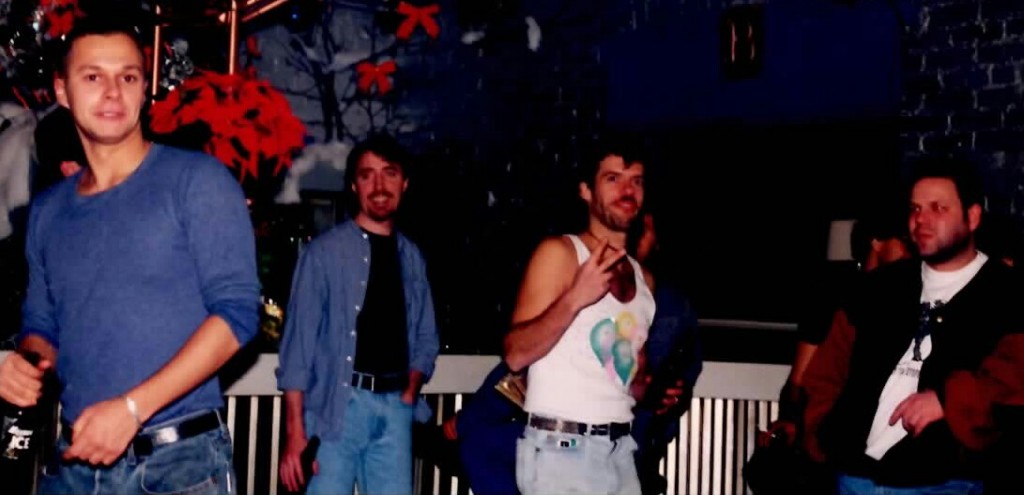
Boots staff, including Casey McNeill (in denim shirt) and Brent Storey (in white tank top). Photo courtesy of Storey.
Storey—one of Toronto’s best known fan dancers, who had practiced in the mirrors of Boots and danced there for years—became a big part of the club’s next chapter when he started working there “by accident, on Pride Day 1993.”
“My lover had passed away three weeks’ prior so, not knowing what to do with myself, I went back to Boots because it always felt comfortable,” Storey recounts.
Friend Barry Harris—with whom Storey had worked at clubs including The Copa, 101 Jarvis, and Chaps—was DJing that night and invited Storey to play with Boots’ new lights.
“I jumped at the chance, and blissfully stayed till the last song. I ended up there every Saturday, and many Fridays, for months—my reward being beer.”
Soon officially hired as Boots’ lighting man, Storey also did event décor, assisted in promotions and, significantly, helped develop and build the club’s next iteration.
The reincarnation: By 1994, things weren’t looking good for Boots.
“When I first was asked to go back to Boots, it was like a giant bowling alley—it was dead,” recalls Greg Matchett, the club’s general manager from 1985-1988.
Upon his return in ’94, Matchett started by hiring new resident DJ Alain Plamondon, fresh from his stint at the popular Bar 1.
“When I walked in, attendance at Boots was down,” agrees Plamondon. “Greg hired me to cater to an older crowd, but there wasn’t an older crowd to spin for. I went in my own direction, and played for the existent, younger, crowd. Within months, the crowd grew.”
This trend continued as Matchett and Storey spearheaded Boots and Bud’s most radical transformation yet: into Boots Warehouse, Toronto’s largest gay dance club of the time, and the Kurbash, an unabashed sleaze bar, complete with a maze, gargoyle glory holes, and a shower.
Kurbash was developed first. Out went Bud’s drag shows and karaoke, in came metal and rougher edges.
“The drag queens left, and the leather-and-denim crowd came back,” says Storey. “The word-of-mouth buzz was enough to fill the place, and Boots also experienced an increase in numbers as men would use ‘Going to Boots’ as an excuse to head to the Kurbash’s infamous maze. Once the Kurbash was established, and the money increased, Rick decided to take the next step, and finally remove the cumbersome main bar in Boots. I designed the new space and built most of it, plus revamped the logo and the name.”
The removal of the massive, long bar in favour of small satellite bars doubled the main room’s dancefloor space. Boots Warehouse was industrial and modern.
“The room had a purple floor, metallic silver walls, and a corrugated steel ceiling,” Storey says. “Lighting was hung from a TV-tower truss, and a system of receptacles allowed me to rework the show. We upgraded the sound to a kick-ass digital system. In spite of the 10-foot ceiling, I was able to fire off pyrotechnics over the crowd!”
“The layout was also spectacular,” McNeill reminisces. “It had something that is ultimately important in gay bars—flow. People like to be able to walk around a lot and hang out in different areas. Boots provided this very well.”
“Within a year, we became the place to go again with a younger crowd,” recalls Plamondon. “The Kurbash brought in an older crowd. Together, they attracted everyone.”
Says Matchett, “I went after the post-AIDS crowd: men around 35, like myself, who were so guilt-ridden because we were healthy—the lucky ones—and most of our friends had died.
“We catered to a demographic that needed to release the AIDS cloud hanging over them. To me, they were and are the generation of gay men that has defined our strengths and gave dignity to our community.”
Theme nights were developed, disco was again celebrated, and artists, including house vocalist Byron Stingily, were booked to perform.
“I remember The Weather Girls being a great deal of fun, energetic, and working the crowd,” says McNeill.
“The Weather Girls were a hoot,” agrees Matchett. “When I booked Thelma Houston in for a night, she had not performed in a while, and was very nervous. After a lot of vodka, she got onstage and blew the crowd away. She was and is a diva.”
Sealing the deal was Plamondon’s ability to mix energetic, crowd-pleasing sets of “everything popular in commercial dance, house, Euro, and tribal,” as he puts it.
“Boots wasn’t afraid to be a gay bar and we played ‘gay dance music,’” summarizes Storey. “Alain was always enthused, critical of himself, and eager to perform well, which he did. He was always concerned about people having a good time.”
By 1995, Boots Warehouse frequently attracted crowds of 2,000 people, which helped fund a stunning renovation of the club’s huge patio.
“Now with 12 bars open on weekends, sales reached $2.5 million that year,” enthuses Storey. “We were packed every weekend!”
Who else worked/played there: Matchett says that Boots’ core staff included approximately 25 people at any given time, with some bartenders and staff dating back to the pre-Boots’ days, as jobs were unionized through the Hotel Selby.
Many interviewees make mention of long=time head bartender Brent Savoy, while Alberto Zara also points to barkeeps including Scott Middleton, Rick Pereira, Jimmy Carmichael, John Boutilier, and Virginia. (“The only woman who worked at Boots at the time; she was very popular.”) Drag queen Amanda Roberts was adored, both for her on-stage performances and skills as a shooter girl.
Managers were key, with original GM Ward Hagar followed by men including Matchett, Robert Rochon, Doug Laufman, and the creative David Heymes, who’d also worked at clubs including Nuts & Bolts, The Copa, and Lizard Lounge.
In addition to Richard McNicoll and Brent Storey, regulars like Brian Wheatley, David Beaulieu, and Pascal Pennella lit up Boots’ dancefloors while DJs Krys Shepherd and Bob Currer played in the club’s early years. [Addendum: Following the original publication of this piece, Bob Currer responded to say that he had DJed five nights weekly at Boots from 1985 to 1987, and to dispute that the club was "a ghost town" during this time. His full statement can be found in the comments thread below.]
Alberto Zara and Boots also helped inspire DJ/producer Barry Harris to return to the booth. Harris had known Zara since the days when they’d both DJed at Dudes cruise bar, with Harris going on to play clubs including 101 Jarvis, The Copa, and Stilife before he formed pop-dance project Kon Kan in 1988, and had a massive pop hit in the form of “I Beg Your Pardon.”
Kon Kan was slowing by the time Harris visited Zara at Boots, and was asked to fill-in on occasion.
“I fell back into DJing after taking three years off; it was like riding a bike,” exclaims Harris, who played many a weekend night at Boots, between 1992-94.
“For fun, I did a Kon Kan track show of ‘Sinful Wishes’ in my underwear, along with a big muscular body builder and three nuns in drag. I guess that was the last ‘show’ Kon Kan ever did.”
Harris tells me he felt a little stifled by the Electric Circus and Energy 108 pop leanings of Boots’ crowds, but also enjoyed playing many tracks of the time, like “Swamp Thing” by The Grid, and Lectroluv’s “Dream Drums.”
“I still love this track! It really turned me on to the ‘new house’ scene,” says Harris, who observes that by 1994, “house—real house—was finally becoming huge in the gay scene.”
Harris points to the rise of gay Toronto DJs like Scott Cairns and Mark Falco, both of whom played at Boots Warehouse for brief periods. (Cairns’ Circuit Wednesdays ran during the warm months of 1996 and, despite the event name, featured underground house.)
“It was like another whole new generation was moving into the gay dance-club scene again—something I’d already seen happen when the 1980s generation took over from the ’70s disco generation,” Harris adds. “But Boots was still a part of the ‘old’ generation. I could get away with only a bit of the mainstream vocal pop house that was coming out, like Juliet Roberts’ ‘I Want You‘ and Crystal Waters’ ‘100% Pure Love.’
Frustrated, he left in the fall of 1994 to develop a house night on Wednesdays at The Barn before moving to Los Angeles in 1998, and soon hitting it big with Thunderpuss remixes of Amber, Whitney Houston and others. (More recently, Harris has returned to his alt-rock roots as he fronts the band Sick Seconds. He also continues to DJ and produce dancefloor remixes.)
I also DJed at Boots for a few years in the mid-’90s, first as a resident of the Betty Page Society Fetish Night; presented by Northbound Leather, this bi-weekly affair ran for many years at Boots, and is at the root of the fetish events they continue to produce. Then, I became the host of Crush, a series that raised funds for queer community groups for much of 1996.
Despite all the success of Boots Warehouse and the Kurbash, however, all was not well behind the scenes. Stenhouse took Hotel Selby and the Boots Warehouse complex into receivership in fall of 1995, prompting Matchett and others to leave.
“I found out that Rick was going to let Boots go into receivership a few days before Pride ’95,” Storey reveals. “It was a crushing blow to learn the news, and I was one of only a very few he told. We were going strong at that point, and I was excited about the Pride décor, free barbecue, pyrotechnics, and Boots’ parade float. Having to hold this secret that weekend was a burden; to do it cheerfully was an effort.
“Rick continued to operate the place for a couple years after the banks took over. A few managers who weren’t familiar with the bar or club scene were hired, before the eventual sale.”
Still, weekends at Boots remained hugely popular. One manager appointed by the receivership company had even suggested a Sunday retro night, which proved to be a big hit.
“When that night began, we weren’t too sure how it would go,” admits its resident DJ, Alain Plamondon. “The third week fell on a Labour Day weekend holiday Sunday, and I will never forget that night. We were packed! For nearly two hours solid during peak time, people on the dancefloor cheered for every mix I did. After that, Retro Sundays were a success.”
Boots Warehouse and the Kurbash were now packed all three nights of the weekend.
What happened to it: In late 1997, the building was purchased by husband and wife Nazir and Anish Akbarali, who initially developed Hotel Selby into a Howard Johnson.
“Nazir and Anish were in the hotel business, but kept Boots running for a few years because it generated money,” says Plamondon. “Anish had a brother named Ralph who became a manager, and was loved by the staff.”
The Akbaralis’ daughters also worked coat check at Boots Warehouse, but all was not harmonious.
“Anish did not believe in nudity of any kind,” says Plamondon. “The Kurbash had to go! The porn on the TVs had to go! Any nudity—even if it was on a safe-sex poster—had to go! This infuriated many, and we lost part of the crowd. We were still quite busy, but the crowds slowly dwindled.”
“The Akbaralis always claimed ‘not to have a problem’ with homosexuality, but never intended to keep the bar long anyway,” adds Storey. “It was a cash cow to generate money to put into the hotel’s renovations. They always put the hotel first, and allowed the bar to deteriorate. It was a battle to keep it going as long as we did.
“Before Pride 2000, there were problems with the sound, lighting, and bar equipment, so [friend and then manager] Roger Bonnell and I had a planning meeting with the owners. They announced that no repairs would be done, there was to be no money spent, and that they were planning a $10 Friday and $20 Saturday cover charge. They explained that any ill will generated didn’t matter as they were closing Boots soon after.
“After sleeping on it, I called Roger, and we quickly agreed we didn’t want to be part of it, and quit. The owner seemed quite pleased he could start building hotel rooms in the bar space sooner.” (In an Xtra! article dated June 28, 2000, Anish Akbarali cited sound complaints as reason for closing the club.)
Others on staff, including Plamondon and Casey McNeill, also made it clear that they would not work the weekend of Pride 2000.
“It was our way of slapping them in the face by not allowing them the immense profits of one last Pride,” says McNeill. “Plus, we all got Pride off! It was a little bittersweet for the staff.”
Boots Warehouse closed with a hastily produced, but well-attended party on June 18, 2000.
Storey decorated with his personal collection of staff t-shirts and other Boots memorabilia, many of which were taken by patrons for souvenirs. Some people also smashed toilets in protest.
“On that last night, people were in shock when they walked in, and the word went around,” explains Plamondon, who closed the club with Nancy Sinatra’s “These Boots Are Made for Walkin’.”
“After DJing in the gay scene for 26 years, I can honestly say that Boots Warehouse was my all-time favourite club to play at,” he says. (Plamondon continues to DJ, including at Woody’s, The Vic, and Zipperz/Cellblock, where his Retro Sunday tradition lives on.)
“Boots was an original, and has never been duplicated; I don’t think it ever will,” says McNeill. “What always comes to mind are the positive feel, and the energy of the place. People celebrated birthdays, anniversaries, Pride, Halloween, anything. Everybody has a few good stories about their times at Boots.” (McNeill later worked in hospitality, and as an HR coordinator at an entertainment company before returning to school this year to study business.)
Storey, who went on to do lighting and décor at Fly nightclub for six years, maintains an interest in the development at 592 Sherbourne St., but his heart belongs to Boots.
“I lost my connection to the building as soon as the entrance to Boots was bricked in, but I still remember the fun people had there, and I’m proud of what we achieved in giving them the best we could.”
592 Sherbourne currently operates as The Clarion Hotel & Suites Selby. The building, which was granted official heritage status in 1989, is likely to be relocated closer to Sherbourne as part of The Selby Condos, a 49-storey development project now in pre-construction stage.
Thank you to participants Alain Plamondon, Alberto Zara, Barry Harris, Bob Harrison Drue, Brent Storey, Casey McNeill, and Gregg Matchett, as well as to Scott Cairns, the late Rick Bébout for his Promiscuous Affections diaries, and the Canadian Lesbian & Gay Archives.

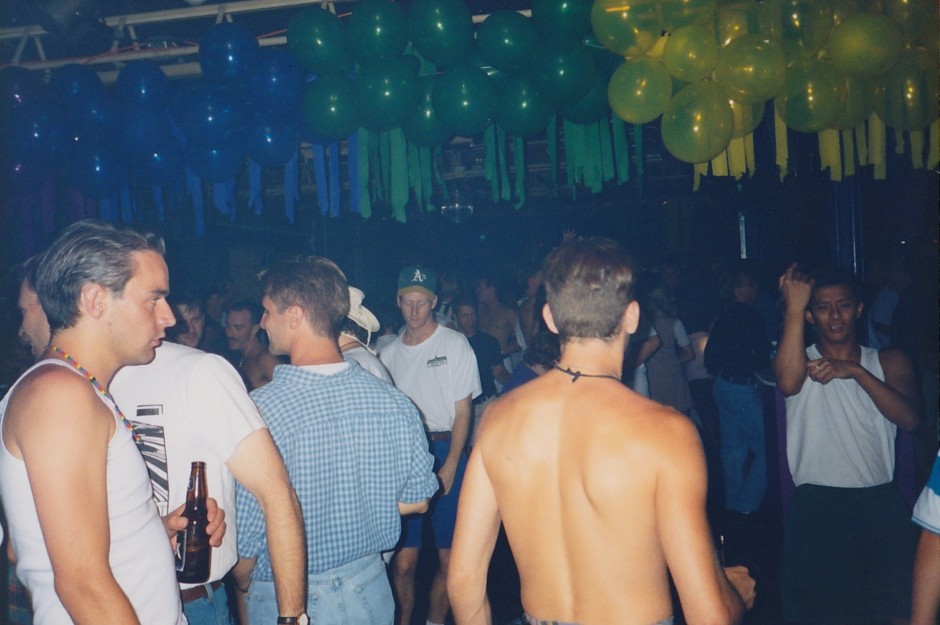
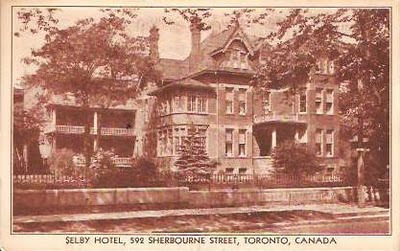
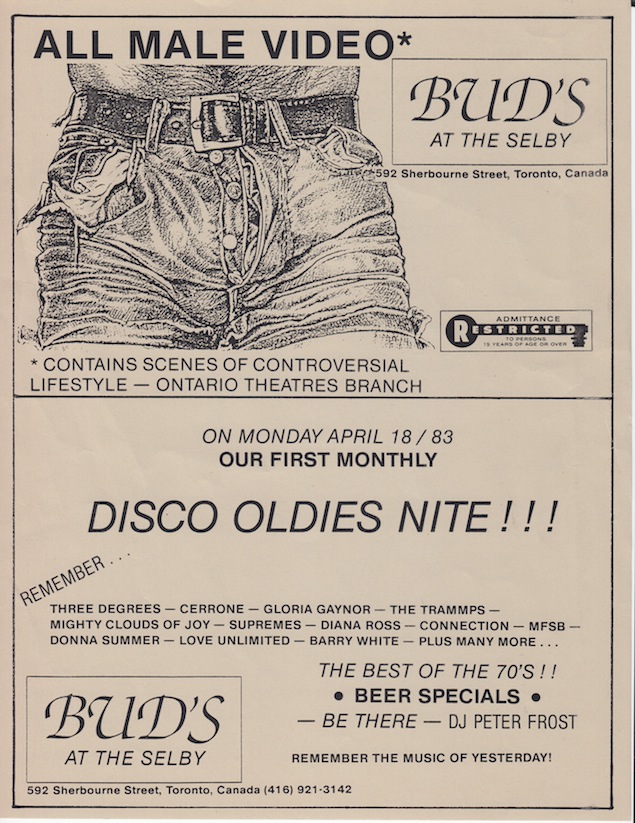
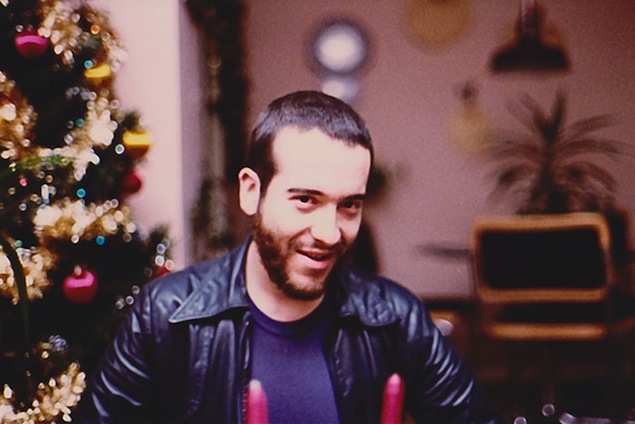
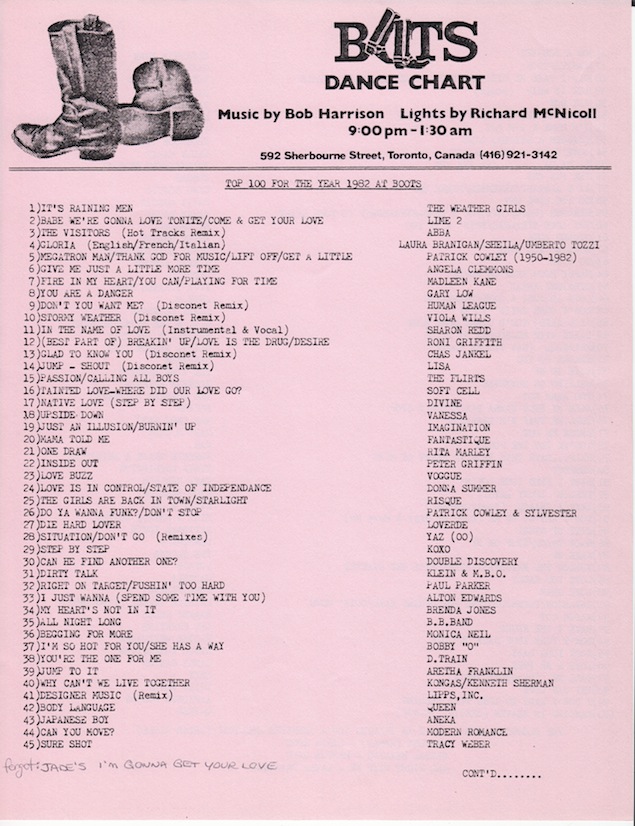
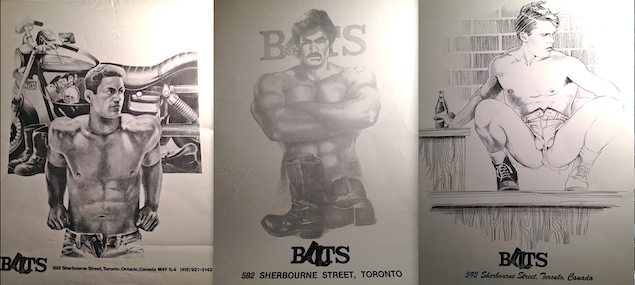
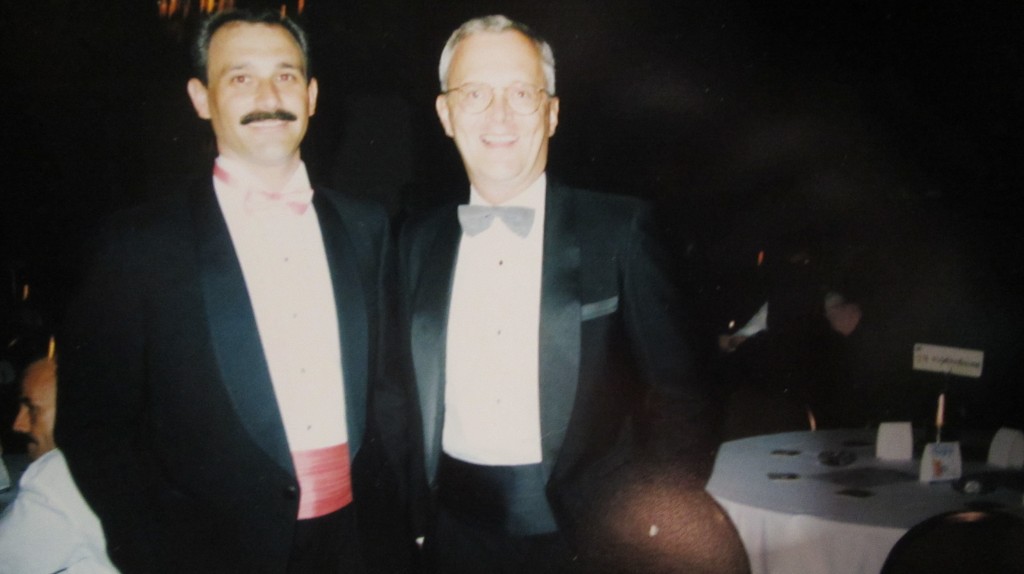
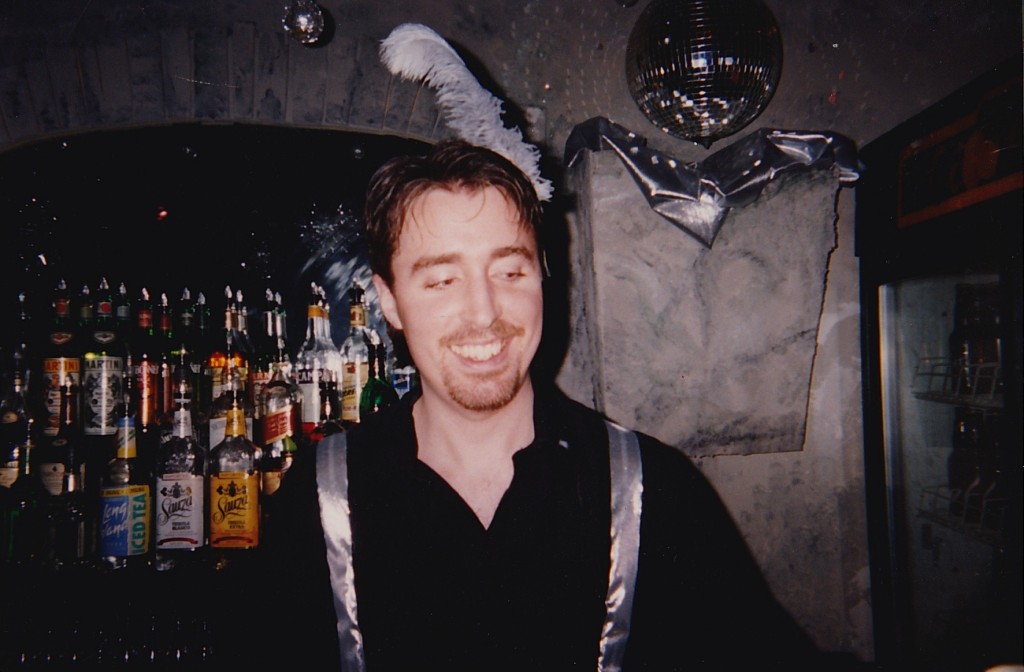
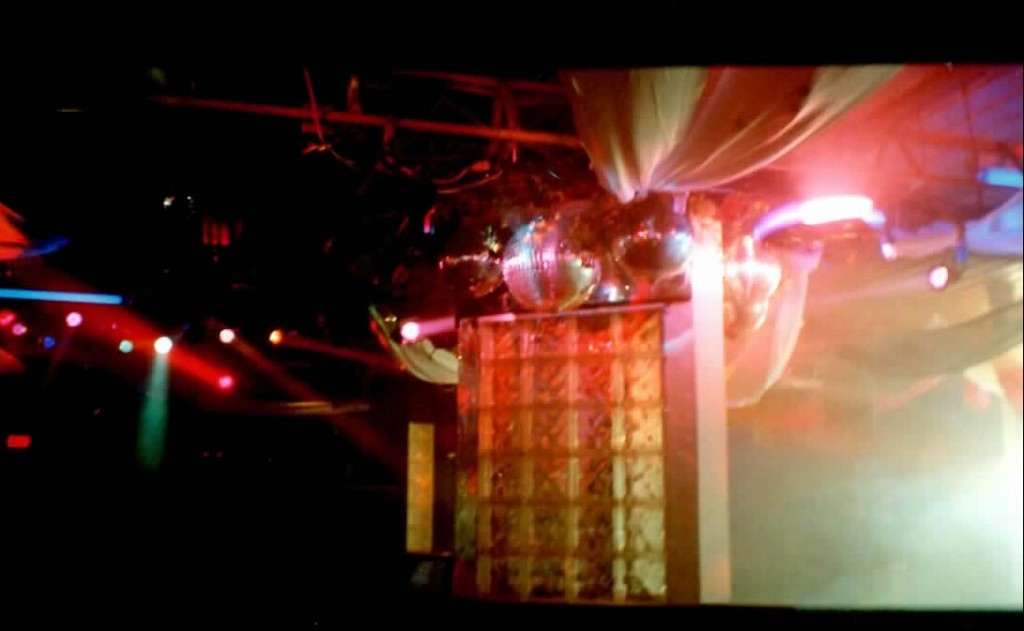
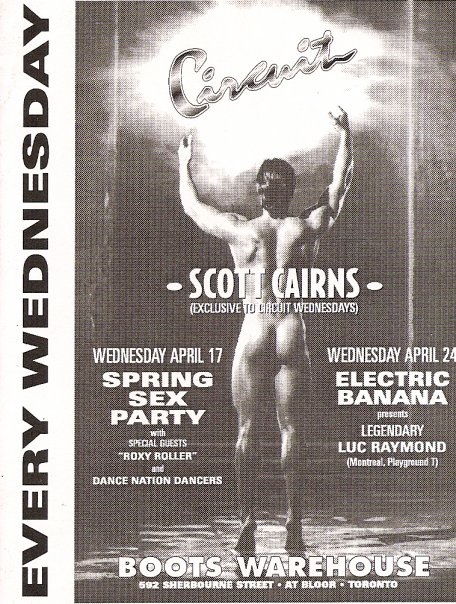
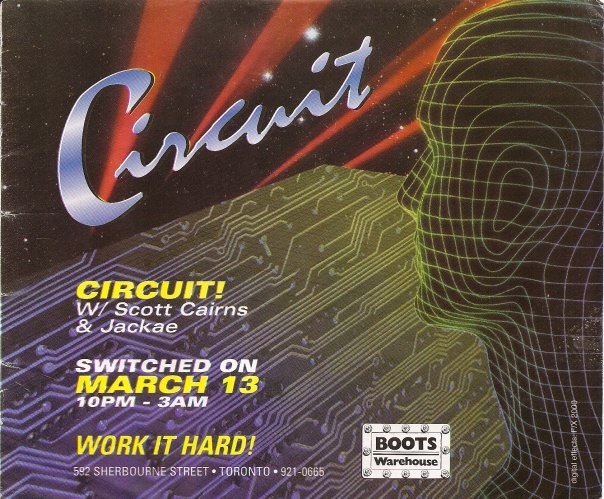
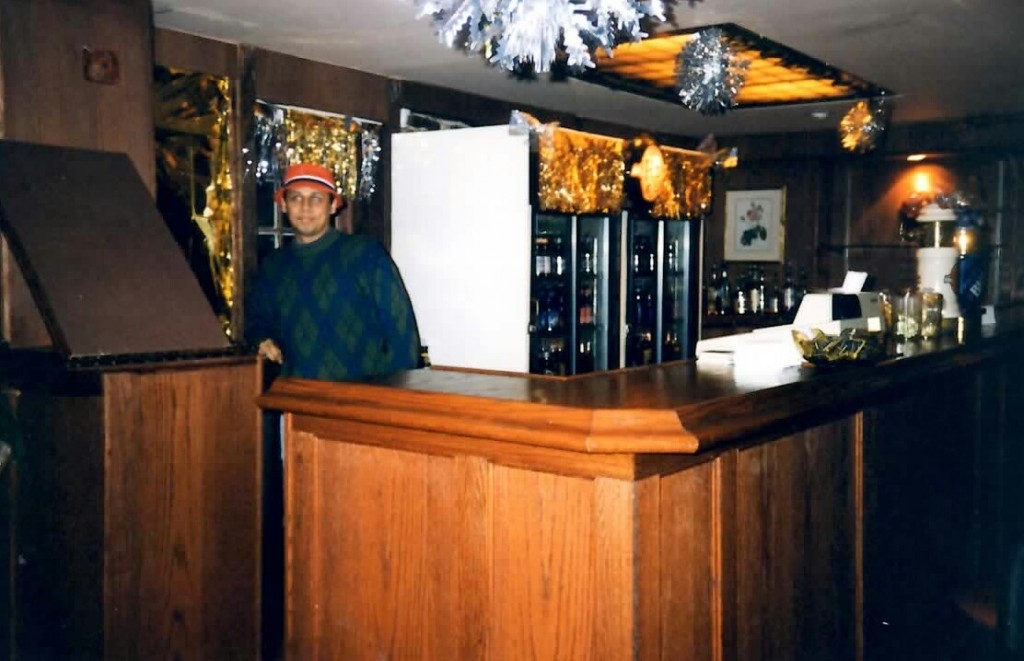
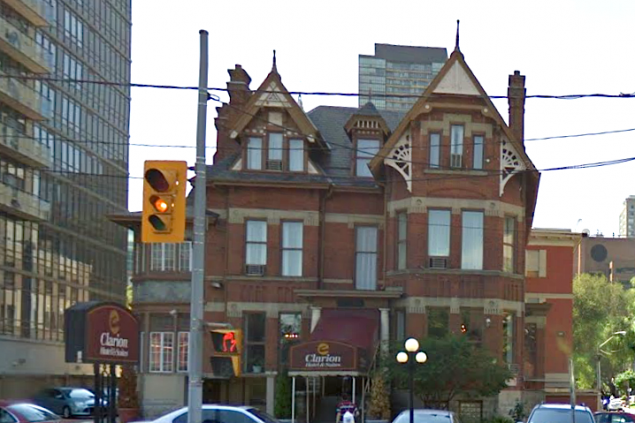
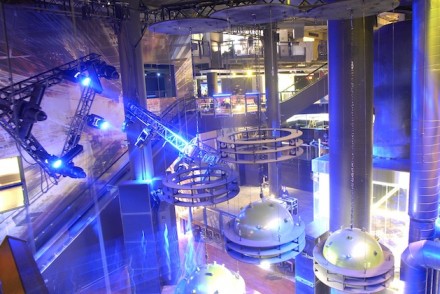
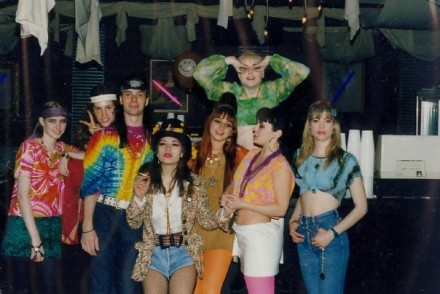
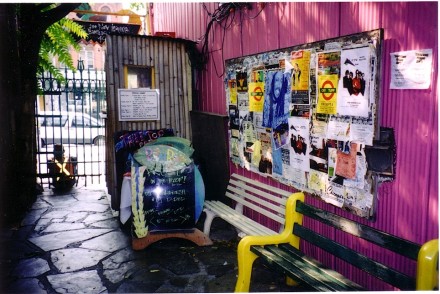

10 Comments
This was the place to be in the 90′s. The atmosphere, the crowd, the staff, the music……you could not go and not have the most amazing time. It was the friendliest, most welcoming club in Toronto. So many amazing weekends in my 20′s were spent there.Retro Sundays were the best!
I was a bouncer at Boots and then the Manager for a year and a bit. 1985 – 1987 approx lol. Brent worked for / with me. That period was amazing. Dale Barnett, Lou and the Bagettes of Sherbourne Street were one of the best early Drag troops. We had amazing theme nights. We brought the Weather Girls up to perform for our AIDS fundraisers Mid Summer Madness times. Eria Fashon and Power records worked with us for the best times and Gay Advancements in Toronto. We broke major ground with local artists. I met so many amazing people and lost so many amazing people during those times. It was by far the most amazing couple of year of my life. When I started as a bouncer Rober was the manager. He was strict but great he was strick on when Drag was allowed and when it was men only bar. He modeled it after Max in Montreal and Boots was HOT! On the theme nights we wold both cover our ears when Gina was screaming her ass off lol. So many stories so many amazing nights. The one can of Cambell’s soup that was our menu originally.
I do have fond memories of Chaps, club Colby’s Boots, The Barn, Woody’s, The spotted Dick, You name it i have been there, The eighties And nineties was a spectacular year’s for me Lots of money was around then, And people was much happier And kind to each other, I miss the live shows with Jack K, And pepsi, Milestone memories fantastic And sweet memories,
[…] going out for drinks to Boots, a gay bar, and then dancing at the Stages disco, Graham Hugh Pearce, 36, and a friend headed up […]
[…] Alexander Welch, 32, and Isaac met at Boots, a local gay bar, and stopped for beer before heading back to Isaac’s home. They played cards and had sex. […]
I was thrilled to read this. I knew many of the people mentioned as I worked at Ryerson Copy Shop, a privately owned printing business. All of the businesses mentioned were our regular customers and I did designs for posters, ads etc for the two Ricks. It was an exciting time. Nice walk down memory lane for me. Thanks
Wow.So pleased to come across This Article…….I had The Pleasure of having My Own Show at Boots and it was such a success……I have so many fond memories of Al Kenny & I and our many many Guests who would come out for a Night of Great Talent and Country Music…The Show was called Tomorrow’s Stars Today…Anyone out there remember me? If so Thanks so so much for the Memories.
I had a blast performing there in the mid 90′s and of course serving shooters was great
I miss that place , it was always packed shame it went the way it did but I have some great memories to remember forever
Boots was the first gay bar I ever went to and I loved the place right from the start. I met my first gay friend that very first night. (platonic friend) I went there frequently from 1981 right until it closed and I don’t remember it ever being empty. It was never empty when I was there, I always had a great time and met so many new people. Back then strangers would always ask you to dance, so it was easy to meet men, unlike today. Gay men weren’t afraid to approach strangers back in the 80′s/90′s. What happened to gay men? Once they became “fabulous” everyone became so unapproachable. Now nobody even looks at a stranger, afraid to make eye contact, never mind as someone to dance.
One other thing I find funny is the line about the area being dangerous. I used to walk from there to Yonge Street (and all over the downtown core) all the time and in all those years, I never felt threatened, afraid or the least bit unsafe. I don’t know a single person who ever said they felt unsafe, so I’m calling BS on that line.
There are a number of bars that stand out in my mind as being special places and hold a place in my heart. The Manatee was a very weird place but I loved it. It was the place I met my very first boyfriend. It was also a great place for a North Yorker to hang out in, all night long, until the subway started at 9am on Sundays. I would dance there the whole night. The Barn was another one of my hangouts. I loved the friendly atmosphere. My first time there, I was terrified and had to leave after 2 minutes. All those tough-looking leather boys intimidated the hell out of me but also turned me on. Once I got used to the place and met a few new friends there, you couldn’t get me out of the place. Katrina’s, Cornelius and Chaps were also bars that I loved to dance at. I miss all these wonderful places. I just cannot get into Woody’s, Fly or Church on Church. The only bar I still enjoy is Cellblock on Retro Sundays but that will close soon, as it has been sold for condo development. (Damn you condos!) After that, I am screwed, as I have nowhere else to go. Sitting in the corner at Woody’s or The Eagle is not my idea of a good time.
You can take the gay boy our of the disco but you can’t take the disco out of the gay boy, even if he is 50 something! lol
All comments in the string below have been republished from their original appearance on The Grid website. We’re including the readers’ comments as they add to these Then & Now stories. We look forward to reading new comments here as well.
George Palmer
Have a photo of Angie Douglas in her wedding gown when I gave her away Her Ceremony was on the patio 8:25 am on November 15, 2014
Donald Mason
Fantastic. I moved to Toronto from small town Ontario in 1977. Going to a gay bar at that time was a way get yourself arrested. Always with a sense of danger when going out to dance. When all that came to an end with the raid on the baths, came a sense of power and Boots. We had arrived. Fueled by $2 shots and liberated gay men we danced. I have many memories including meeting an important man in my life for many years and family members seeing a room full of gay men for their first time. My mother my sister in law and a sister who upon entering a gay bar for the first time exclaimed ” there are so many beautiful men here”. Seemed orgasmic for her. This is a beautiful blast from the past and a reminder of our friends who aren’t here anymore. This helps remember the fun. Thank you with love 12:16 am on November 15, 2014
Erik
I didn’t live in Toronto at the time. I didn’t even turn 19 until 2001. However, I LOVE reading articles like this! The history of establishments, especially those that were pinnacle and key in LGBTQ movements! Oh I hope you have more of these for me to read! I didn’t even know this, and now I learned and am educated and when I go to walk by this building, will have SO much respect, appreciation and admiration for it 8:32 pm on November 12, 2014
Ryan
It’s one of those funny things really, Boots remains a source of warm memories for me even 14 years after closure; much of my adolescence took place at the bar or with people who worked there (thank you security friends, Australian coat check, record spinners, bartenders). Many nights were colourfully peppered with questionable teenage fashion choices, drinking the infamous milkshakes, possibly indulging in light narcotic use and smoking menthol cigarettes. Of course it was a great place to meet new people too* I will neither confirm nor deny removing a tall table from the Kurbash side of the bar on the night of Boots closure, nor willI indulge in idle speculation that I may or may not have been questioned by police about allegations of ‘inciting a riot’ by smashing a cistern or two. What I will say is that for a few years Boots was a noisy, smoky home away from home for many people – young and old. Oh god, and that hamburger stand! I staffed that once and almost certainly food poisoned a few unlucky punters (sorry!). Reading this article brought thoughts and faces back to mind that have been absent for far too long, so thanks for writing it. I’ll close this mini-eulogy by saying what we all heard on the patio every weekend on loop from the inimitable Amanda Roberts. “TEQUILA, BUTTER RIPPLE, ROLLO OR AN AMANDA?” (* probably for sex, possibly on premises) 6:28 pm on November 12, 2014
Amanda Roberts
I have a lot of great memories from Boots. I worked with some great people and served a lot of “cocksuckers” to the crowd. You could hear me on the patio from blocks away. The final night I performed Donna Summer’s “Last Dance” and made my exit with my shooter tray in hand. 11:39 am on November 12, 2014
JOHN HENDERSON
BOOTS & BUDS WAS THE BEST BAR/NIGHTCLUB TORONTO HAD, FROM 1985 TO 1995 THE BEST 10 YEARS, THE WILD PEOPLE, GREAT SHOWS, FANTASTIC MUSIC, THE VIBE, AND THE FREEDOM TO BE IN A CLUB WHERE NOBODY WAS WATCHING YOU OR SEARCHING YOU AT THE DOOR, NOT TO MENTION THE GAY PRIDE FLOATS WITH AN INCREDIBLE THEMES, NOTHING LIKE NOW, EVERYTHING IS CORPORATE. THANKS TO ALL OF THOSE WHO TOOK PART IN MAKING BOOTS THE BEST CLUB PARTICULARLY THOSE 10 YEARS WHO MADE A LOTS PEOPLE HAPPY!!!! 1:42 am on November 6, 2013
JM
CAPITAL LETTERS???? Please stop screaming at me. 8:16 pm on November 14, 2014
George Olds
Wow! What a lot of memories this stirred up for me. I was ‘young and single’ back in those days until I met Rick Stenhouse through a banquet I prepared for the Metropolitan Community Church. Rick was in attendance and came to the kitchen to compliment me – which was high praise for me since I knew he owned Crispin’s. We started ‘dating’, and I was with him the night of the infamous bath raids. I can’t confirm that he moved to Vancouver, but I did see him at an event there in the late 1990′s. It was an underwear party (at the Pumpjack, if I recall correctly), and Rick being somewhat ‘socially awkward’ was dressed in a suit. We had a brief conversation, both expressing surprise at seeing each other there/it’s a small world kind of talk. Thanks for the memories. 12:12 pm on October 3, 2013
Cameron
I was just coming out and finally got the nerve up to go out to a gay bar. An old copy of Fab told me that Boots was the place to go. Having no gay friends, I traveled downtown alone on a Saturday night and walked around what looked like a hotel. I couldn’t figure out how to get in and figured I must be in the wrong place. Finally I left and meandered down Church St where I eventually ended up in the Barn. My first gay bar. A man there bought me beer and informed me that Boots had closed it’s doors for good the weekend before. So I never got to experience the legendary Boots. But the nice man took me for pancakes at Golden Griddle, so it wasn’t a total loss. 10:08 am on September 23, 2013
shawn
I left NB in 2000 and arrived alone in Toronto. After asking a few people on MIRC where to go, I ended up at Boots – IT WAS FANTASTIC – I met several great friends – and we all made plans to go again the next night – I was heart broken to find that my first night at BOOTS was the last night it would be open. Having been to many bars, in Toronto, NY and beyond – Boots certainly had a character unlike no other – Thanks for the great memories – S 8:37 pm on September 22, 2013
Joey David
I remember the club as if it were yesterday. Boots was one of the clubs my friend and I used to go dancing at, at that time I never drank alcohol even though people thought otherwise because I was a nutcase attention seeker. Anyway, the bar/club used to be a slutty place, where men were in cages with thongs and whips, porn was playing on the TVs, there was even a dark room where my friend and I lit a match to make light but got kicked out of the bar as a result. Later on they took those cages out and made it less slutty. Once they started to charge cover we never went back, because none of the gay bars did, perhaps maybe Colby’s but it was worth it. But my friend and I used to frequent there in the mid to late 90s. It was an okay bar, but our first choice at the time was Colby’s. Colby’s was the best gay club back then. Boots was far from the bar hopping gay scene so inconvenient. But memories for sure. 7:34 pm on September 22, 2013
Bob Currer
There is a major inaccuracy regarding the period following the opening of Chaps in 1984. Alberto Zara did not appear on the scene until after January 1 1988. I was contracted as the house DJ at BOOTs when Bob Harrison left and I played five nights a week from early 1985 until News Years Eve 1987 and on one of my nights off, I subbed for Bob Harrison at Chaps to give him a break. During that time, Boots was hardly a “ghost town” as it was packed to capacity every weekend night that I played and had substantial audiences throughout the week as well. Boots had a very loyal audience and was quite well-attended In 1987 my (then) life partner died of AIDS and I approached Rick Stenhouse and gained his support to mount a week-long AIDS Benefit – Mid-summer Madness however; I was not permitted to enlist the assistance of any Boots paid staff. With the help of a good friend, I single-handedly planned the entire event that included a dance marathon, Tupperware Party (believe it or not) and The Weather Girls as the grand finale. The event also included performances by other rising dance music stars of the time (Eria Fachin and others) with the help of Vince DeGiorgio of Power Records. The event packed the bar every night and benefitted the AIDS Committee of Toronto (ACT), Toronto People With Aids Foundation (PWA) and Casey House by raising a record amount that exceeded the donations raised by other clubs in the community.. I mounted three other major events including a major Halloween event and a week-long Christmas Extravaganza that had long line-ups every night of the week between Christmas and New Years Eve.I left December 31, 1987 after a major (almost violent) disagreement with Rick Stenhouse and Greg Matchett so I’m not surprised that this time period was reported to you inaccurately. 4:09 pm on September 22, 2013
Ken
I have to be honest… the most influential place that I ever knew growing up gay in Toronto was The Manatee on St Joseph…(forever on film in “Outrageous!”, the film which made Craig Russell famous). I might be wrong, but it seems to me that the Manatee existed before Boots – or any of the other places mentioned here. Someone needs to do an article on it, too. 10:50 am on September 22, 2013
SACHA MACkENZIE
Quite right: the Manatee opened in 1969! It was fabulous! And had a long run as a top dance club and drag venue. Recently the drag queen “Fancy” had a big, well-attended reunion party downtown….good times. Sacha 2:47 pm on September 26, 2013
ertha
always wanted to go in, but I couldn’t. that made it even more mysterious to me. i did go with friends often to Katrina’s, this was in 1990 i think. good memories here as well as Stages, Boots, together’s felines, chez moi, Thanks 10:55 pm on October 14, 2013
Sharon Pugsley
I used to attend Boots with my brother Stephen (may he rest in peace) and his friends. it was the best time ever I always felt safe. This whole article left me feeling warm and fuzzy thinking of my brother and the best times I had with him when we would go dancing to all hours of the night. he and his friends always put me in a taxi to make sure I got home safe. I sure miss him, and that was a great place to go. thank you for the memory. Sharon 10:44 am on September 22, 2013
novy
Thanks Denise! Moved to Toronto from NS in 95 and Boots was just about the most amazing place I had ever seen. Have been around since, but nothing compares to the original youthful thrill of the gay sexual freedom that I had at Boots. I am grateful that you write this series…thanks 3:06 am on September 22, 2013
sebastien
Casey, It is like I am there again! What a fantastic time line to recall, and how we found a begining of a great friendships of friends from Boots, how you find a best friend. Casey, you meet someone, you give your number on a boots matches, and best friends for ever! I have done so and lost my matches withing the Kirbash, made lots of new men to play with though, back in the day. We all have a story on and @ Boots. Fantastic Article of the history of Toronto nightlife… Memories Casey, Luv, Seb  7:53 pm on September 19, 2013
Tim McNeill
Great article. An up and down history for sure. Though I didn’t get down there often, I sure had a lot of fun every time. As Casey the bartender’s brother, I seldom had to pay for beer. Thanks guys. In later years, Richard McNicol, Brent Storey, Alain Plamondon, Casey and I ended up together on a bowling league. Far cry from a bar, Huh. 9:17 pm on September 18, 2013
Jennifer Mason
Hi Tim, I worked with Casey at Crispin’s, we were close friends and wondering if you could pass on my email so we could reconnect. Would love to hear from him. Not sure if you would get this reply or if this will work but I am hoping. Thanks so much. jennifer 10:08 am on November 15, 2014
Alan McGinty
Great blast from the past! I loved that Boots was just so big and varied, with several different bars. It did evolve over time too, and I liked Kurbash a lot. Every time I pass the cheapo chain hotel that’s there today, I think of how it used to be…. 2:36 pm on September 18, 2013
canuck1975
Thanks for writing this Denise. I came out in ’93 and ended up walking in the parade with Boots (and obviously was there that weekend) even though I was 18 at the time. I have so many milestone memories tht involve Boots and this gave me a chance to reflect on them. I did some crazy things there and definitely appreciate that Boots was there for me to experience them! 6:39 am on September 18, 2013
r.kelly clipperton
sweet sweet memories as always. brilliant journalism denise. xxx 10:46 pm on September 17, 2013
Yep
First gay bar I ever went to and I was lucky enough to have experienced it a month before it closed. I was 15 and it was literally one of the most amazing and eye opening experiences of my life. Thanks for writing this…brings back a good memory  10:45 pm on September 17, 2013
Dean Garrard
Alot of fond memories from that place. Way back when IRC was popular a group called “Gay Toronto” met there every Saturday to chat, drink and dance and get introduced to the newest member’s. Back then for me that was my “Grindr”  Later on I did some bar-backing work for them during pride and did coat check for a bit as well.. The closing of that bar was in a way the closing of my “coming out”. After that the gay scene was changing more and more. Truly no other bar ever came close to being like “Boots” and still miss the old days and fun and adventure that bar had to offer. Least to say met alot of my friends from there and my first boyfriend on the dance floor where it all started  Thanks for the reminder! 8:41 pm on September 17, 2013
Mathieu Marcil
Great read as usual. Thanks for the memories! 5:11 pm on September 17, 2013
Prince
Boots was AMAZING. I weep for gay club and bar culture in 2013, with people going to Buddies, Fly, and Crews thinking those are decent dance clubs. Boots was fun, diverse, and a great place to be with your friends. They also had no porblem whatsoever letting in underage folk who were desperate for a place to be party. I am 33, so I’m not some ancient dinosaur lamenting the good old days. Boots was quite simply and plainly a better experience than what we get today. 5:03 pm on September 17, 2013
Pieter
Boots was unique, one of a kind, club/bar. Thank you for the memories! 8:58 am on September 22, 2013